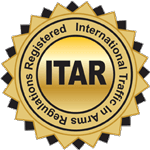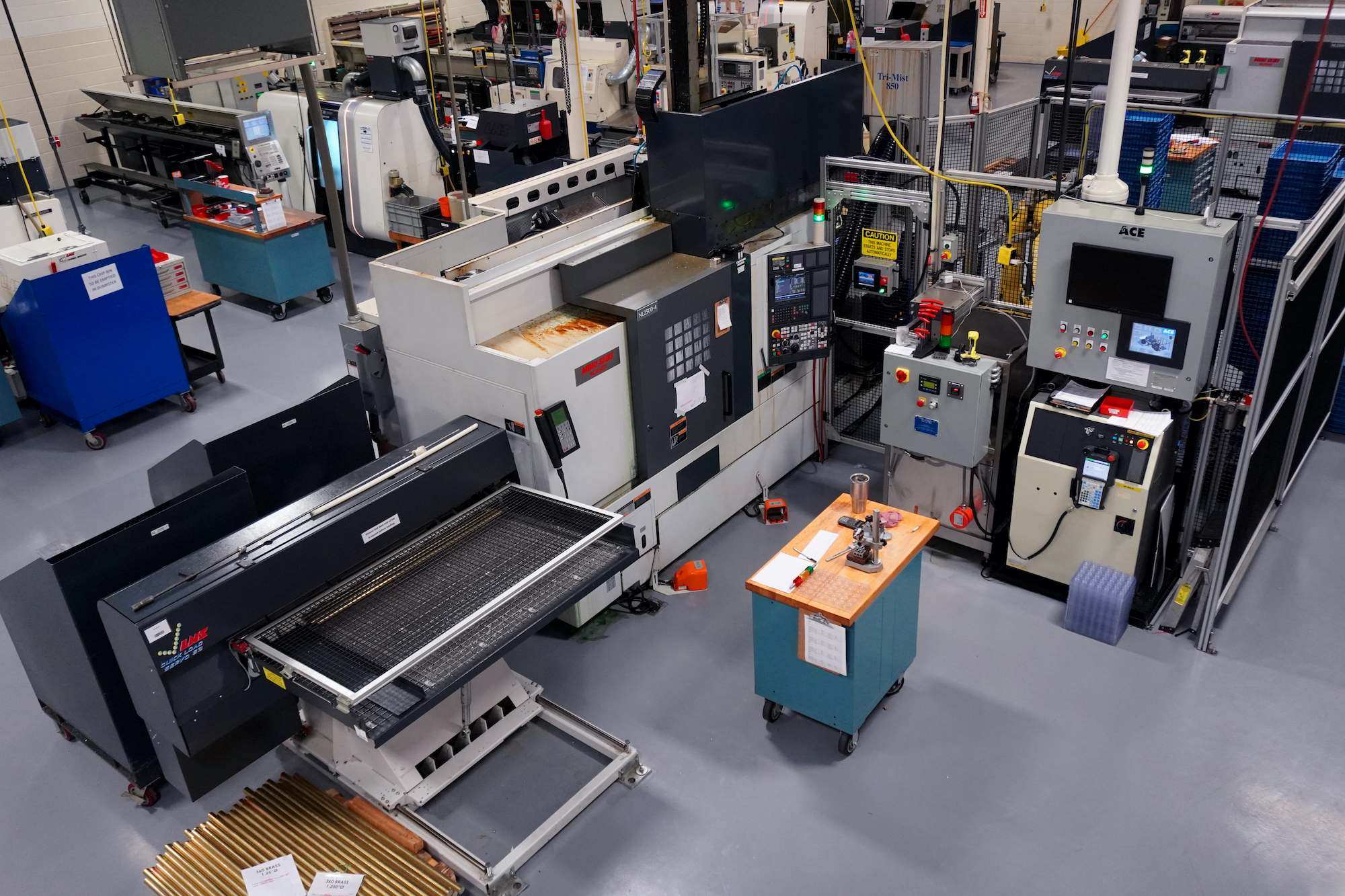For any manufacturer looking to sustain their company’s growth, maximizing the return on investment (ROI) is vital. It doesn’t matter whether the investment is in equipment, software, training, outsourced expertise, or other business-related expenditures meant to grow a company’s profits. While establishing ROI is less complicated in bigger industries like hospitality, marketing and retail, niche manufacturers have a harder time making this determination. Yet when it comes to high-volume machining, Staub Precision Machine has the capabilities to maximize our clients’ ROI, including the automated equipment and the software that supports it, along with decades of expertise.
How Staub’s High-Volume Machining Processes Produce Quicker ROI
Calculations for advanced CNC machine shops like Staub generally talk about ROI in much longer terms, often looking ahead many years rather than just a few months down the line. In Staub’s case, our investment in leading-edge CNC and other automated technology since the 1980s has made Staub’s machine shop the envy of our competition. Yet, though Staub plans meticulously for the future and closely follows the development of technologies driving high-volume machining, our contract manufacturing clientele can see this ROI much more quickly.
Staub’s investment in automated technologies puts us in a position to help other manufacturers make precision components without spending money on their hardware and software. To produce at high volume, Staub’s machining clients glean all the benefits of our automated production facility without the expense of direct investment. But how does a business calculate the ROI when working with a contract manufacturer or other entity to which it outsources production?
ROI can be a rather complex calculation in these cases, as it takes into account the costs of all the hardware, software, and training that would otherwise be necessary to produce a part or product. It also won’t include the costs of labor, logistics, marketing, or even the expenses required to ensure the machine shop runs smoothly. When the cost of energy and sourcing materials is included, calculating ROI becomes increasingly complicated. But that doesn’t mean determining ROI in these cases is impossible.
Let’s see how Staub boosts our clients’ ROI through our automated, high-volume machining services.
How Staub’s high-volume machining helps clients achieve quicker ROI include:
- Consistently producing workpieces with very little variability to meet and maintain a client’s high standards for quality.
- Easily scaling production for clients up and down as needed to adjust to market fluctuations and support just-in-time manufacturing techniques more effectively.
- Ensuring broken and worn tooling is detected to manage tool life, guaranteeing that tools are always operating optimally to reduce defects and substandard work.
- Increasing the efficiency of our machines and constantly developing our automated systems, which in turn decreases labor expenses.
- Maintaining CNC machines regularly to ensure maximum uptime during production.
- Manufacturing parts with high-volume machining methods enables Staub to more easily meet deadlines so that our clients can meet their production deadlines.
- Minimizing the number of setups needed by using high-capacity machining magazines for tooling.
- Performing multiple tasks simultaneously with 5-axis CNC machining and other high-volume machining techniques.
- Reducing errors by constantly improving accuracy in our manufacturing methods to lower rejection rates and produce parts with fewer defects.
- Using sophisticated tools to measure workpieces to achieve high-volume machining of parts with complex geometries and tight tolerances that comply with industry standards.
There are numerous ways that Staub’s investment in CNC and other automated technology supports high-volume machining. The above only touches the surface of how our company can help other manufacturers meet their production needs. Let’s dive deeper into how Staub’s investments in our systems can help our clients achieve a quicker and better ROI.
Precision in High-Volume Machining
While mass manufacturing methods like injection molding can produce large numbers of parts quickly, this is the only system for mass production that compares to the precision achievable with high-volume machining. The accuracy of modern CNC machines allows extraordinarily tight tolerances and complex geometries that were impossible decades ago. Precision CNC technology makes high-volume machining the preferred method for manufacturing high-quality parts en masse.
The ability to produce these components quickly improves a company’s reputation and makes for more loyal customers, leading to an improved ROI. Due to increased production accuracy, defective and substandard parts also become less likely. This will lead to fewer product failures, raising the overall quality of the end product. To understand how this will affect a company’s ROI, a comparison must be made regarding quality control before and after committing to production with advanced high-volume machining.
Speeding Production Through High-Volume Machining
While maintaining precise quality, high-volume machining technology has exponentially increased production speed exponentially, especially for complex components. Even simple parts can be made with CNC machining in half or even a third of the time it takes to fabricate them manually. Features of CNC machines make them far faster, giving them an advantage over manual machining methods.
Elements of high-volume machining that make it faster include:
- Automation enables tool changes to take place in a quarter of the time it takes with manual machines.
- High-speed spindles enable machine tools to move more rapidly, increasing production speed.
- Software used for CNC machines enables high-volume machining by making identical parts through a set of programmed instructions with minimal defects.
With the ability to produce components quickly, manufacturers can meet deadlines more easily. This capability, in turn, translates to a quicker result, improved ROI and higher profits.
Greater Flexibility with High-Volume Machining
Choosing the best CNC machine for a job requires understanding the different types of equipment used in these processes. High-volume machining techniques allow greater versatility, with multi-axis machines capable of performing several tasks simultaneously while creating intricately designed components with complex geometries.
Some of the CNC machinery that supports high-volume machining includes:
- 3-axis vertical machining centers for fabricating simpler parts.
- 5-axis machining centers incorporating high-speed and precise cutting with robotic pallet handling capabilities.
- Automated systems for washing, drying, and packaging parts.
- High-precision turning centers can fabricate simpler and more complex parts, as well as washing, drying, unloading, and packaging capacities.
- Machine-tending robots for loading and unloading workpieces.
- Mill-turn machines that combine 5-axis milling with turning.
- Pallet handling systems that optimize production and increase flexibility by enabling manufacturers to scale storage.
- Rotary transfer machines that optimize output and reduce cycle times to support high-volume machining.
- Turning machines with Swiss-turning capabilities for parts with complex geometries and high-precision components
The above is only a small example of the various precision, automated, and robotic machinery that Staub uses to support high-volume machining for our clients. The versatility brought to parts manufacturing by these machines allows easier adjustment to the market. Staub’s capabilities contribute to greater and swifter ROI growth by bringing greater agility to our clients’ business.
Optimizing High-Volume Machining Processes
CNC equipment optimizes high-volume machining processes. Software that simulates the physical operation of components without fabricating a prototype allows engineers to explore new part designs with greater ease. These virtual modeling tools also predict any issues that may develop while efficiently programming tool paths to reduce energy use and waste.
These simulations have made the designing of parts less difficult and expensive. Virtual prototyping eliminates the need for trial and error methods to determine the best action. Instead, data is used to resolve potential processing issues before production begins. This leads to data-driven decisions that allow manufacturers to get the most out of machines. Using technology to optimize processes results in higher productivity and reduced setup times, leading to improved ROI.
Other Staub Capabilities to Boost ROI
Staub’s cutting-edge automated processes and machinery ensure our clients see their ROI sooner, with our ability to produce high-volume precision components. Machining parts takes more than having the proper equipment, however. Staub’s machinists are well-versed in manual processes necessary for finishing certain components with tight corners and complex geometries. While our machine shop is geared up for high-volume machining using automated technology, Staub also has manual deburring, finishing capabilities and a robust quality and inspection department ensuring we meet every customers’ highest standards and requriements.
Staub’s manual finishing capabilities include:
- Staff well-trained in manual deburring processes
- Specialized tooling for complex jobs
- Pneumatically-powered as well as manual tools
- Conventional and video microscopes to evaluate surfaces
To learn more about how our automated high-volume machining, manual finishing, and other services can make a difference to your company’s ROI, contact us today.



